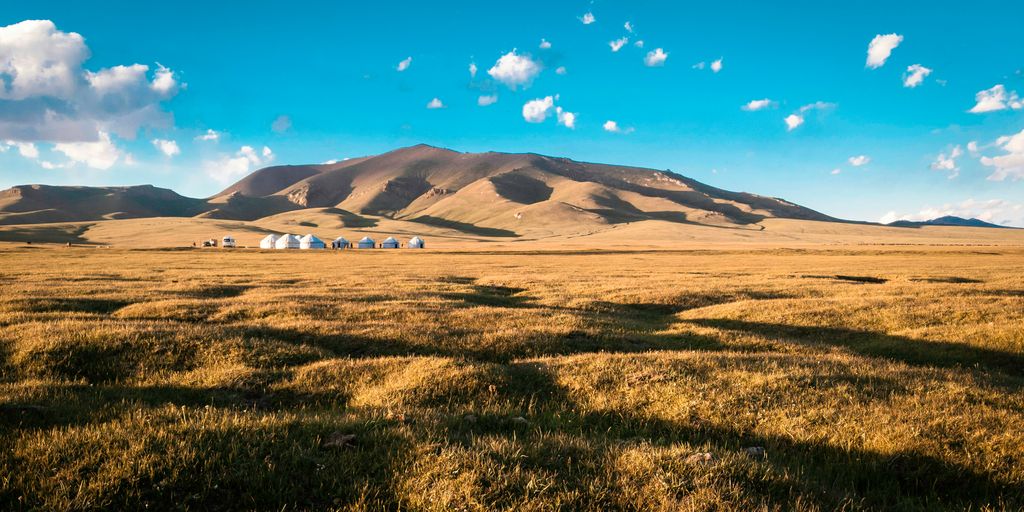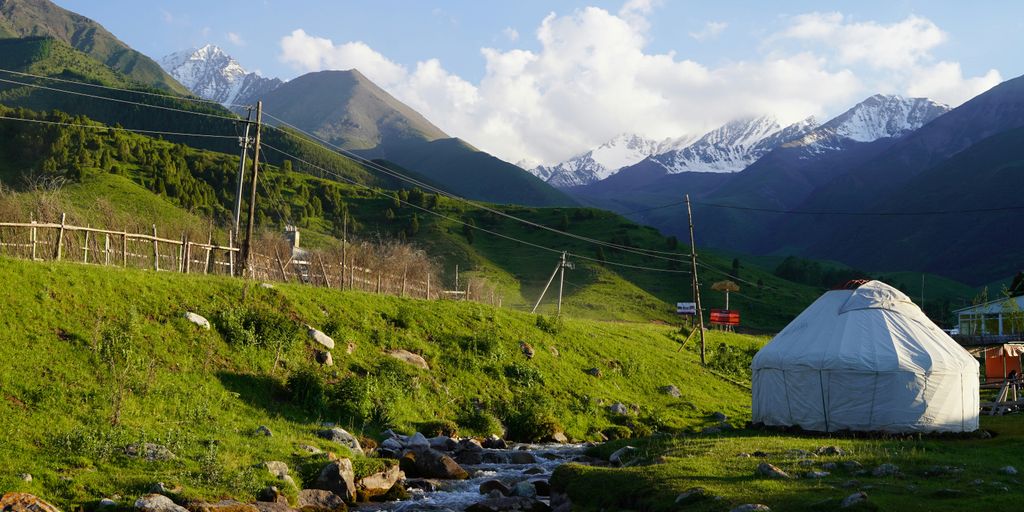The Ultimate Guide to Buying a Yurt: What You Need to Know
Buying a yurt and living off the grid is an exciting adventure, but it can also be a bit overwhelming. There are many things to consider, from choosing the right size and type of yurt to understanding legal requirements and budgeting for your purchase. This guide aims to simplify the process and provide you with all the information you need to make an informed decision. Whether you’re looking for a cosy retreat or a full-time residence, this ultimate guide will walk you through everything you need to know about buying a yurt.
Key Takeaways
- Understand your space needs before choosing a yurt.
- Check local regulations and get the necessary permits.
- Budget for both initial costs and ongoing maintenance.
- Consider essential features like insulation and heating.
- Research and choose a reputable yurt supplier.
Choosing the Right Yurt for Your Needs
Assessing Your Space Requirements
Before you start looking for yurts, think about how you plan to use it. Will it be a home, a workspace, or a guest house? Knowing this will help you figure out the size and type of yurt you need. Also, consider the climate and terrain where you will set it up. This will affect the kind of insulation and other features you might need.
Types of Yurts Available
Yurts come in different styles and sizes. Some have multiple rooms, which is great if you need separate areas for sleeping and living. Others are more basic but can be customised to fit your needs. Make sure to explore all the options to find the ideal yurt for sale that suits you best.
Customisation Options
One of the best things about yurts is how customisable they are. You can choose different materials for the walls and roof, add windows, and even install plumbing and electrical systems. Think about what features are most important to you and make sure to include them in your plans.
A yurt’s versatility makes it a viable option for many purposes. No matter what you have in mind, a yurt is a unique way to meet your housing or workspace needs.
Understanding Legal and Zoning Requirements
Checking Local Regulations
Before setting up your yurt, it’s crucial to check with local authorities about the laws and regulations. Different regions have varying rules about what structures can be built. Make sure there are no restrictions against yurts in your area. Some places even have rules about how far homes must be from bodies of water.
Permits and Permissions
You’ll need to determine what permits are required to set up a yurt on your land. This often involves contacting your local government to find out which regulations you must follow. It’s a good idea to make a checklist of all the permits you need to avoid any surprises later.
Insurance Considerations
Taking steps to minimise risk is a crucial part of being a responsible property owner. Think about how first responders could get to you in an emergency. Also, consider installing smoke detectors, sprinkler systems, or security cameras to keep your yurt safe. Insurance can help cover these risks, so make sure to discuss your plans with an insurance agent.
Budgeting for Your Yurt Purchase
Initial Costs and Financing
When it comes to buying a yurt, the initial costs can vary widely. Tiny yurts (up to 12 feet) can start at around £3,000, while an XXL yurt (30-50 feet) can go up to £35,000. You also need to consider whether you want the yurt with or without felt, which is the inner lining. Thicker felt will cost more but offers better insulation.
If you’re wondering how to finance your yurt, many companies don’t offer financing options. You might need to pay the full amount upfront. Alternatively, you could take out a loan on the land where you plan to set up your yurt.
Ongoing Maintenance Expenses
Owning a yurt isn’t just about the initial purchase. There are ongoing maintenance costs to think about. These can include repairs to the structure, replacing the felt lining, and general upkeep. It’s a good idea to set aside some money each year for these expenses.
Cost-Saving Tips
Here are some tips to help you save money on your yurt purchase:
- Buy during off-peak seasons: Prices can be lower when demand is not high.
- Look for second-hand options: Sometimes you can find used yurts in good condition.
- DIY assembly: If you’re handy, you can save on installation costs by setting up the yurt yourself.
Budgeting for a yurt involves more than just the initial purchase price. Make sure to consider all the additional costs to avoid any surprises down the road.
Essential Features and Accessories

Insulation and Weatherproofing
When it comes to yurt tent selection, insulation is key. You want to stay warm in the winter and cool in the summer. Look for high-quality materials that can handle different weather conditions. Some yurts come with built-in insulation, while others offer it as an add-on. Make sure to check the options available.
Heating and Cooling Solutions
Heating and cooling your yurt can be a bit tricky, but there are plenty of solutions out there. From wood stoves to portable heaters, and even solar-powered fans, you have a lot of choices. Think about what will work best for your climate and your needs.
Plumbing and Electrical Systems
Adding plumbing and electrical systems to your yurt can make it feel more like a home. You can install basic plumbing for a sink and toilet, or go all out with a full bathroom and kitchen setup. For electricity, consider solar panels or a generator if you’re off the grid. Make sure to plan these systems carefully to avoid any issues down the line.
A well-equipped yurt can offer all the comforts of a traditional home, making it a versatile and cosy living space.
Finding Reputable Yurt Suppliers
Top Yurt Manufacturers
When it comes to buying a yurt, choosing the right supplier is crucial. The top yurt retailers include:
- Pacific Yurts
- Rainer Outdoors
- Smiling Woods Yurts
- Blue Ridge Yurts
- Freedom Yurt Cabins
- Yurtz By Design
- Shelter Design Yurts
- Nomad Shelter
- Colorado Yurt Company
- Two Girls Farm and Yurts
What to Look for in a Supplier
Finding a good yurt supplier means looking at several factors:
- Quality of materials used
- Variety of designs and sizes
- Customer service and support
- Delivery times and costs
It’s also a good idea to visit customers near you to see the yurts they purchased or ask questions from yurt owners online, in forums and Facebook groups.
Customer Reviews and Testimonials
Reading reviews and testimonials from other yurt owners can give you a good idea of what to expect. Ask questions like:
- Was your yurt delivered on time and did it live up to your expectations?
- What were the unforeseen expenses of owning your yurt?
- What was the most challenging part of setting up the yurt?
- What would you have liked to know ahead of time?
- How was your customer experience throughout the purchase process, and after?
Westley Farm, where this cosy yurt hides in the woods with a few other spaces, has been carefully nurtured into a thriving, biodiverse habitat.
Setting Up and Maintaining Your Yurt
Site Preparation and Foundation
Before you even think about setting up your yurt, you need to find a level and clear spot. This is super important because an uneven surface can cause problems later on. Make sure to remove any rocks, roots, or debris from the area. You might also want to consider laying down a foundation, like a wooden platform or concrete slab, to give your yurt a solid base.
Assembly Tips and Tricks
Setting up a yurt isn’t a one-person job, so grab a friend or two to help out. Start by staking down the base securely. Then, attach the walls and roof, making sure everything is tight and secure. If your yurt comes with a manual, follow it closely. Trust me, it makes things a lot easier!
Routine Maintenance and Repairs
Keeping your yurt in good shape is all about regular maintenance. Check for any tears or holes in the fabric and fix them right away. Clean both the inside and outside of your yurt to keep it looking nice and to prevent mould and mildew. Also, make sure your yurt is well-ventilated to avoid any moisture build-up.
A little bit of regular care can make your yurt last for many years. Simple steps like keeping it clean and dry, especially during rainy seasons, can go a long way.
Here’s a quick checklist to help you maintain your yurt:
- Keep the inside clean and dry
- Check for and repair any tears or holes
- Clean the exterior and interior regularly
- Ensure proper ventilation
- Apply a coat of oil-based primer and exterior paint annually to protect against UV damage, mould, and mildew
- Maintain the doorframe, hinges, and locks regularly
Setting up and taking care of your yurt can be a fun and rewarding experience. From choosing the right spot to making sure it stays in good shape, there’s a lot to learn. For more tips and advice, visit our website and explore our resources. Start your yurt journey today!
Conclusion
In the end, buying a yurt can be one of the most thrilling and fulfilling decisions you’ll ever make. This guide has aimed to walk you through every step, from understanding the legalities to choosing the right insulation. We hope it has made the process a bit less daunting and a lot more exciting. If you still have questions, don’t hesitate to reach out. Happy yurt shopping, and may your new adventure bring you closer to nature and joy!
Frequently Asked Questions
Do I need permission to set up a yurt?
Yes, you might need permission to set up a yurt. Always check with your local council for any regulations or permits required.
What types of yurts are available?
There are many types of yurts, including traditional Mongolian yurts, modern yurts with added features, and customisable yurts that you can design to fit your needs.
How much does a yurt cost?
The cost of a yurt can vary widely. It depends on the size, type, and customisations. On average, a basic yurt can cost between £4,000 and £10,000.
What kind of maintenance does a yurt need?
Yurts require regular maintenance, such as checking the roof and walls for any damage, ensuring the insulation is intact, and keeping the structure clean.
Can a yurt be used year-round?
Yes, a yurt can be used year-round. With proper insulation and heating, yurts can be cosy even in winter. Cooling solutions can make them comfortable in summer too.
Where can I buy a yurt?
You can buy a yurt from various suppliers. Look for reputable manufacturers with good customer reviews. Some popular options include Pacific Yurts and Rainier Outdoor Yurts.





